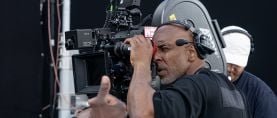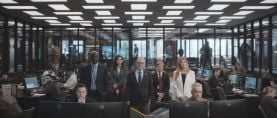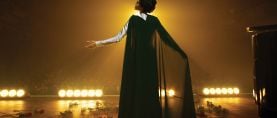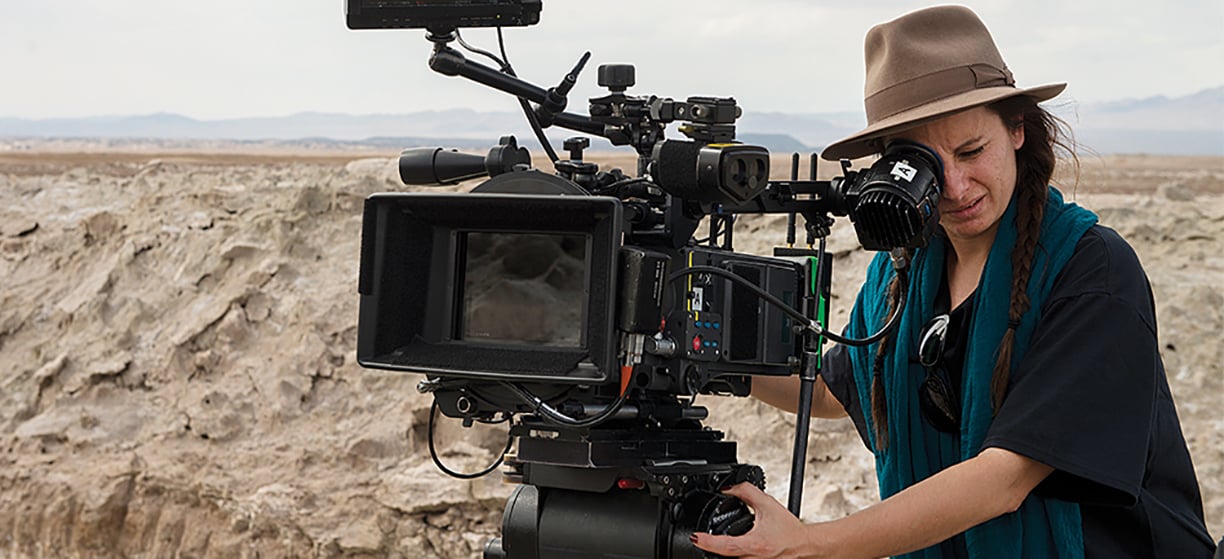
Natasha Braier, ASC, ADF and the “Female Gaze”
The cinematographer discusses her work and the feminine counterpart to the male perspective.
The cinematographer discusses her work and the feminine counterpart to the male perspective.
The screening series “The Female Gaze” at The Film Society of Lincoln Center (July 27–August 9) celebrated the work of 23 female cinematographers in features, documentaries and shorts.
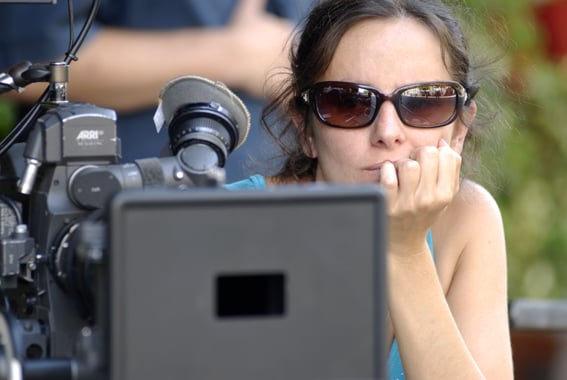
Two entries were photographed by ASC member Natasha Braier. Since earning a Masters of Cinematography at the National Film and Television School in England, Braier has shot features, commercials and music videos around the globe.
“The Female Gaze” program showcased her features The Milk of Sorrow / La Teta Asustada (2009, directed by Claudia Llosa) and The Neon Demon (2016, directed by Nicolas Winding Refn).
Before the series opened, Braier spoke with AC about her collaborations, embracing digital, her upcoming film Gloria, and how her films fall under the “female gaze.”
American Cinematographer: Looking over your career, do you feel you were held back because you are a woman?
Natasha Braier, ASC, ADF: I was lucky that I didn’t experience that. I was a still photographer first, since I was a teenager. When my parents moved to Europe I took film classes a little bit here and there until I applied to the Masters of Cinematography [program] at the National Film and Television School in England. They accept six cinematographers every year. When I got in, it was the first year in the history of the school where there were four women and two men. For everybody else, that was strange, but it was my reality. I never had to undergo the experience of being the one girl with five guys.
“Every person — every artist — has one gaze, which is the result of who they are, what they’ve lived, their life experience, everything that they’ve done until that moment when the camera is rolling.”
Do you think the industry can get to the point where you are considered just a DP, and not a “woman DP”?
For me and for the female cinematographers I talk to, we started doing this job because we love the work. We weren’t thinking in terms of gender, or “Do I bring something specific because I am a woman.” If I bring something specific, it’s the specificity of me.
I think it’s great to have a festival of films shot by women cinematographers, put it out there and say, “Look, here are women doing this job and this is what they are doing.” I think it’s great to celebrate that. But I think it’s weird to envelope everything in a “female gaze.” Honestly, I’m not sure what that is. Every particular person has a gaze. Of course, I understand the concept of the male gaze — I get it. We have a whole society that is part of that, 100 years of cinema with the male gaze and the history of art as a whole. But I don’t think it’s as simple as saying, “And this is the female gaze.” We don’t have a society structure in place that shapes a female gaze in the way that the male gaze is held by the patriarchy.
Every person — every artist — has one gaze, which is the result of who they are, what they’ve lived, their life experience, everything that they’ve done until that moment when the camera is rolling.
I feel it’s exactly the same for us as women. And at the same time, it’s an important time to say, “Hey, there’s only two percent of women doing this. Why is that?” And to show you great work women are doing.
Also, this is 2018. Reducing the genders to a binary female and male is already a bit out of date.
[Additionally], a cinematographer is always working for a director. If even there issuch a thing as the “female gaze,” when I’m working for Nicolas Winding Refn, it’s not just my gaze. It’s my gaze at the service of hisgaze — the person who hired me to help him materialize his ideas and make this movie. It’s a mix, because he’s got a very objectifying, masculine gaze in this movie. It’s a collaboration — a fusion of two artists creating something together.
“I’m attracted to a director with a strong visual personality because I feel with them that I have the freedom to do something more visual and poetic and less tied to conventional storytelling.”
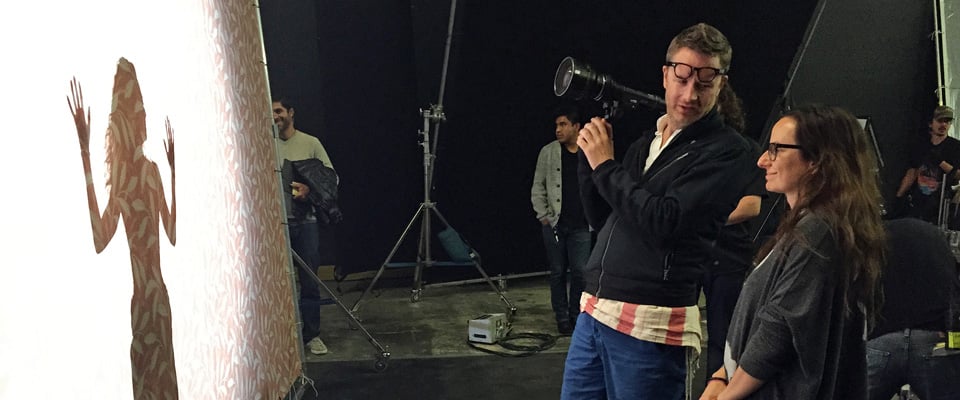
How do you choose a project like The Neon Demon?
I guess I tend to choose very different things because I gravitate towards the essence of the story I am telling, whether I identify with that, resonate with that and whether I also have something to say to the world about that.
But the choices come from totally different places. I can be doing something with Nicolas Winding Refn, and I can be doing something with Lynne Ramsay and I can be doing something with Sebastián Lelio — and they’re all completely opposite to each other — but there’s always some underlying thing that I can identify with. Many times, that is identity or some kind of healing process.
If I really try to dig into what’s the constant in my work, I could find it in the themes and the emotional connection with the story. I’m probably also choosing stories and directors with extreme visual approaches — something I haven’t done before that are taking me out of my comfort zone. It might have to do with my inner need to keep exploring myself and keep exploring different territories.
I guess I’m attracted to a director with a strong visual personality because I feel with them that I have the freedom to do something more visual and poetic and less tied to conventional storytelling. When you look at a director’s work, you can see if that director uses the visual side of storytelling. [You think], “If this person is interested in exploring this [visual] language, it will allow me to express myself more in the poetry and emotion of the camera and the lights.” When you see a director who has a body of work where the image never seems the strongest [component], you think, “Obviously, this person has been interested in prioritizing other things.” Which is fair enough. There are so many different ways of making movies, and each movie has a way that suits it. I’m interested in strongly visual directors who will push me forward and not hold me back in order to cover themselves or be safe. I’m not interested in safety. I’m interested in daring — in taking risks without fear of failure.
How does that translate to a specific visual style?
I consider myself more an emotional poet than a narrator, in a way, so I tend to gravitate to the filmmakers who also have that approach. I believe in telling stories in less conventional ways. You can be more poetic with the image and let the viewer complete the picture.
But your imagery is so startling, so immediate. It’s not hard to read.
But it’s immediate in the sense that it’s transmitting the essence of what it has to transmit, which is not always a very clear explanation of why this character is going from point A to point B. It doesn’t mean being obscure, but that the feelings and emotions that the image can suggest to the viewer are more important than necessarily explaining a situation or story very clearly. It leaves more room for interpretation if I suggest more than telling it to your face.
Of course, when I am choosing a project where you have to transmit certain information, then I do it. Some of my films are more conventional, and I do commercials all the time which are very clearly storyboarded. If I’m doing a project that needs that clarity and narration, of course I’m not going to go for the abstract.
But I tend to choose projects that call for a more artistic approach. Directors who are somehow freeing themselves more from conventional storytelling devices and from the expectations of average viewers who want to “understand” everything.
What’s striking about The Neon Demon is that you are, in a way, redefining the male gaze.
When I signed for the movie, I didn’t even read the “script” because Nicolas was not showing the real script around. I just signed up to do some crazy journey with Nic about the fashion photography world. We had conversations about it, his worries about his two daughters, about being a foreigner in L.A. — a lot of things — and I just really respected him as an artist and I thought, “This is going to be an interesting ride.” I never thought, “I’m bringing a ‘female gaze,’” because it’s a movie about the male gaze exposing the fashion world and its domination by the male gaze.
“[The Neon Demon] was shot chronologically [in sequence] because that’s the way Nicolas [Refn] shoots, which was great for me because every week I was gaining experience.”
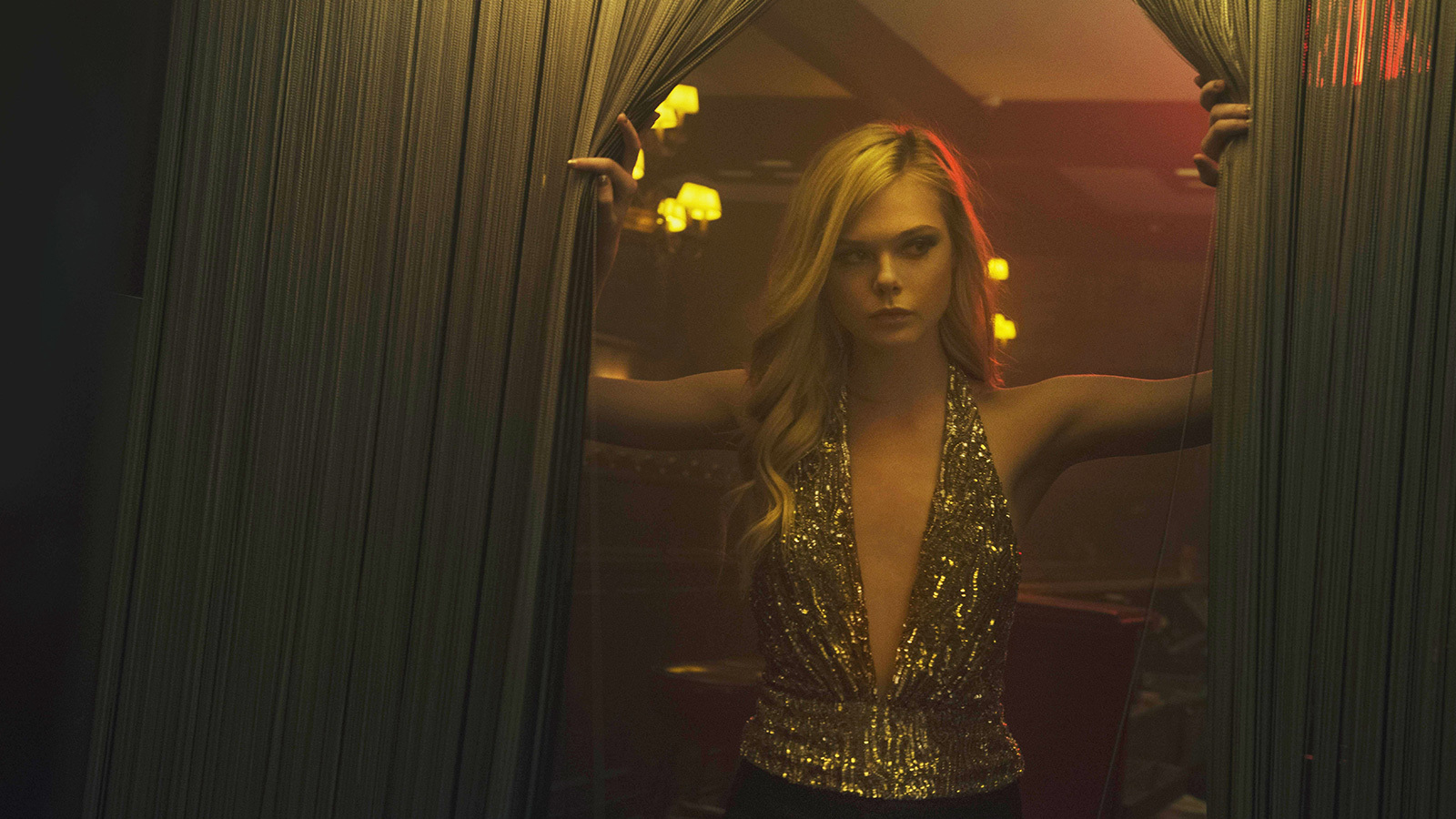
And Refn totally uses the male gaze to do it. He’s totally objectifying [actress] Elle Fanning’s character. She’s not even a character — she’s an object or image for everyone to interpret. It’s very meta. It’s like criticizing a world using the same elements that belong to that world. I think that’s why nobody really got it. There’s nothing safe about it, and that’s what I stand for. I don’t want to be doing something safe.
Talking about leaving your comfort zone, wasn’t Neon Demon your first digital feature?
Yes, and it was really scary for me. I thought that a movie that is so much about beauty had to be shot on film. But Nicolas doesn’t like film. So, I had to learn digital.
Throughout the shoot, I learned how to make my work look less digital — or whatever my freaky eye saw as digital — and more like film. I started to invent different tools and devices to [mimic how you] flash the film or flare in the camera [lens], [such as] painting filters with Vaseline.
It was shot chronologically [in sequence] because that’s the way Nicolas shoots, which was great for me because every week I was gaining experience. I could get to be braver because the movie was going crazy anyway — it gets crazier and crazier as it goes along. My learning curve was parallel to the movie’s craziness.
Are you happy now shooting with digital instead of film?
I feel like I’ve embraced the digital revolution, which in the beginning I hated. When the Red One came out, I was like, “Okay, I’m done, I’m going to open a restaurant or something. I can’t do this.” And then, luckily, the Alexa came and it’s bearable — I just had to learn how to use it.
I feel like before, with film, I was more a dancer in a way, dealing with movement. Now with digital I feel a little bit more like a painter. And I’m embracing that side because you can do all these things you couldn’t do before.
What about operating?
I still operate in commercials, but in movies, since I moved to America, I couldn’t operate at first because the union wouldn’t allow me. It was really difficult to let that go. It was a part of my world that I didn’t want to be separated from. It was like they were stealing away half of my job.
It was very painful in the beginning. But then I found great operators who had the same sensibility that I have and could technically operate even better than me, because they’re only doing one thing. They’re not also lighting and considering dramaturgy and all the things that I have in my head. I actually started to appreciate how great it was to have a second pair of eyes — and muscles.
When I started to shoot digital, I appreciated it even more because I found I really have to be by the monitor to light properly. When I was lighting on film, it was great to operate because the best way to light was through the viewfinder. Just take a few readings and then it’s all by eye.
But with digital, I haven’t managed yet to be able to light a set without looking at the monitor. I talk about this with a lot of cinematographers, and most of them are also very dependent on the monitor, because the Alexa doesn’t react exactly the way a film stock reacts. You don’t have a direct translation from your eye unless you’ve maybe done 20 films on Alexa, and then it might be different. Having an operator really helps, because otherwise it would be a lot more demanding, running back and forth.
I have a whole setup that’s called the Vortex, so I have the monitor on wheels and a tent so that I can be very close to the action and there’s room for the director. I work a lot with LED lights nowadays. I have them all wireless, and I have my dimmers in the Vortex, so I’m looking in the monitor and I’m also DJing.
“If you get a good operator, it’s very likely that he or she is going to do it even better than me, because that’s what they do 24/7 — they’re concentrating just on that.”
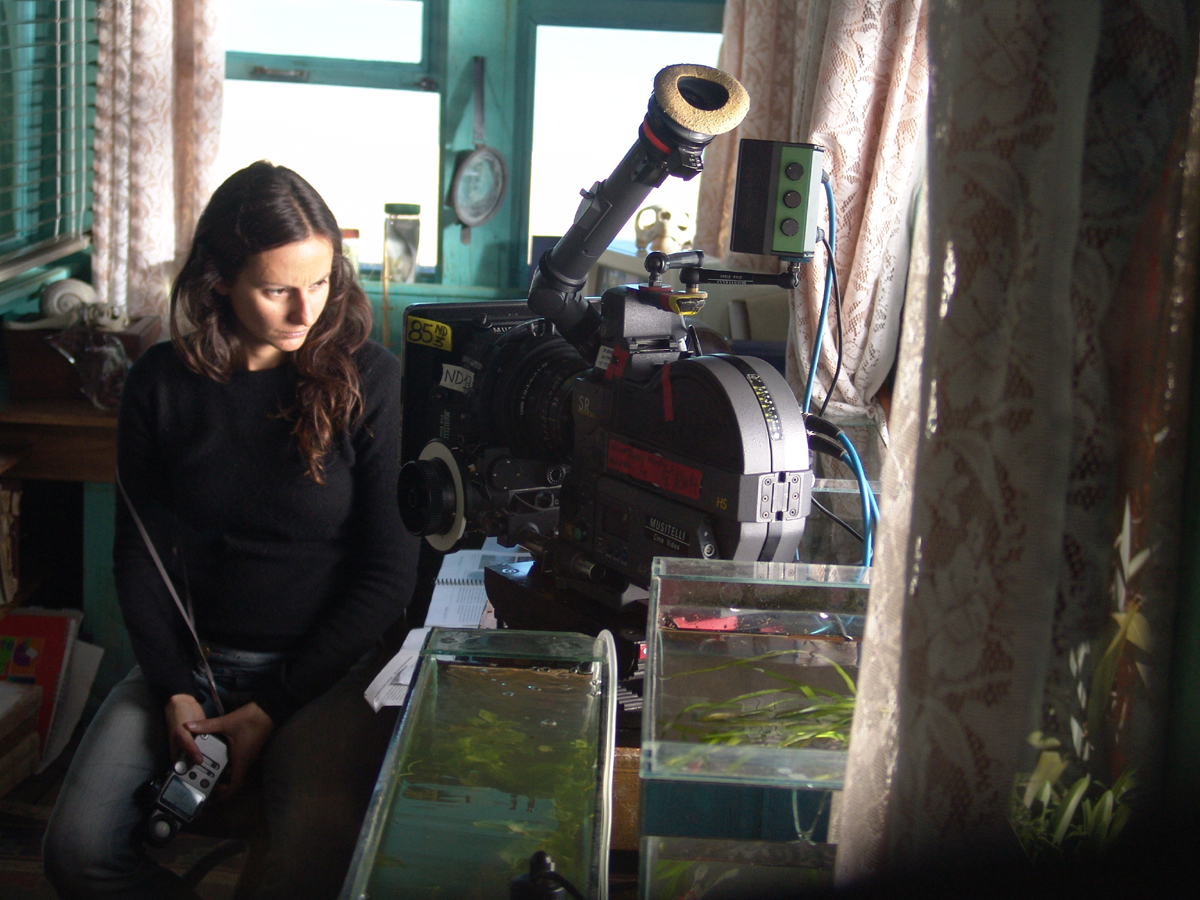
So, it’s like you’re mixing the lighting live?
Yes, I’m a mixer now. In a way, I’m not as close to the actors and the camera as I used to be, but I also feel that I have a lot more time for small details and to support the director.
How do you convey the pacing and rhythm you want to your operator?
It’s not a complicated task to direct an operator to the tempo and the nuances of operating that you want. The difficult thing is the casting — it’s getting the good operator. If you get a good operator, it’s very likely that he or she is going to do it even better than me, because that’s what they do 24/7 — they’re concentrating just on that.
You’re still designing the shot — and you might even shoot the first rehearsal or the first take — and then you can give it to your operator to do it. Then I’m at the monitor being really specific, trying to improve the shot more and more. I can be super picky and be like, “That was great, but just go like a millimeter faster at the end” or whatever. You can really fine tune at the monitor.
“As a photographer, you really need to be in that last stage of the process to ensure the integrity of what you were doing from the beginning to the end.”
How important is the grading process to you?
I’m there every time. They only pay you for one week, even if you’re working for two weeks. And it often takes place six months after the shoot. Sometimes I turn down movies so that I will be able to grade my work, because I always feel like I want to have the control until the end. It’s really a question of respect for the cinematographer. Why would you hire a cinematographer if you didn’t want them to do their job until the end?
Before, with film, and even with a digital intermediate, you could only go so far in any direction. When you printed the negative, nobody else had a lot of say or control over how it looked after you exposed the negative the way you did.
Nowadays with digital, you can light a scene super, super dark and they can still make it totally bright. The range is so big. As a photographer, you really need to be in that last stage of the process to ensure the integrity of what you were doing from the beginning to the end. It’s becoming a lot more important for us to defend that as part of the process. I think everyone has it in their contracts. The mutual respect of the director and the collaborators should be the goal of everyone on the crew.
Right now, you’re grading Gloria, a remake of a 2013 film written and directed by Sebastián Lelio. He also wrote, edited and directed the original. As a cinematographer, how do you approach something that was filmed before?
It’s a very interesting question, and I asked myself this question before taking the movie because I am interested in creating something, in finding the visual language of a movie and its palette. And, of course, with a movie that’s already been done, [I thought], “Well what am I going to be doing here?”
At the same time, I really like Sebastián. I wanted to work with him since we talked about working on his film Disobedience. So, when I had a conversation with him, I was trying to figure out what his approach would be — what he was expecting me to bring. What I got was that he wanted to reinvent the movie, that he was not interested in doing the same thing all over again — an exercise like Funny Games, for example. [Director Michael Haneke doing a 2007 shot-by-shot remake of his 1997 film.]
I watched Gloriaa few years before, and I loved it. But I didn’t watch it again. I tried to come to the project with a clear mind — start with a fresh point of view and see what happens. At the end of the day it’s like its own experiment — doing the same thing again somewhere else. It’s like Hal Hartley’s Flirt— the same story filmed three times, in Berlin, New York and Tokyo. Even with the same script, everything ends up totally different because the context is different.
“I’ve always been interested in adventures — since I was a kid. I just take the projects that I feel somehow are going to be a journey — you know — an adventure, sometimes on the visual side of things, sometimes on the human
side of things.”
But Sebastián really had the first film so imprinted in his head. He put such thought to where the camera goes in the first movie, and he learned in the edit what worked and what didn’t work. So, it was like, yeah, he had shot the movie already, but the first one was like a very good rehearsal.
When we approached each scene and figured out how we were going to film it, we realized that the philosophy of what the camera was doing was the same as the first movie, because he was like, “That’s where the camera has to go.” It was like having a conceptual blueprint for the storyboard. Of course, we then adapted it to every different location, and when appropriate we made different choices.
It was a really interesting process. It was like doing a film with a director who had really done his homework and knew exactly where the camera goes. He told me that if you put the two films next to each other, something like 80 percent of the footage is mirrored. Everything is opposite, but similar — like a Rorschach test. It will be really interesting to see what the critics will do with it next year.
The lighting was totally free for me because I didn’t look at the other movie and what they did. I didn’t want to copy or refer to it. I created the lighting from scratch, following my feelings about the emotions of the movie. In the end it’s a different version, in the quantum possibility of thousands of Glorias: Chinese Gloria, African Gloria, American Gloria. It was thoroughly interesting.
It’s hard to pin you down to a specific style.
I’ve always been interested in adventures — since I was a kid. I just take the projects that I feel somehow are going to be a journey — you know — an adventure, sometimes on the visual side of things, sometimes on the human side of things. Sometimes I might choose a project that’s going to take me to live in Africa for a few months so that I can really get to experience a culture and a way of seeing the world from the inside. When I finished The Milk of Sorrow I stayed for two months traveling in Peru with some friends from the movie. It was a great experience.
Who has inspired you in your work?
When I started, someone who really inspired me was Jean-Yves Escoffier, with his poetic approach in his work with Leos Carax. I knew Mauvais Sang shot by shot. I was obsessed with the Nouvelle Vague in the sixties, with Fassbinder’s films shot by Michael Ballhaus [ASC] and, of course, Tarkovsky. He was probably my first mystical experience. And then Chris Doyle came in the late nineties. And Chris was probably the most extreme influence in the sense that, “Oh, wow, you can be a crazy artist.”
“It’s very interesting to notice how differently the audience reacts to The Milk of Sorrow today than when it came out almost 10 years ago.”
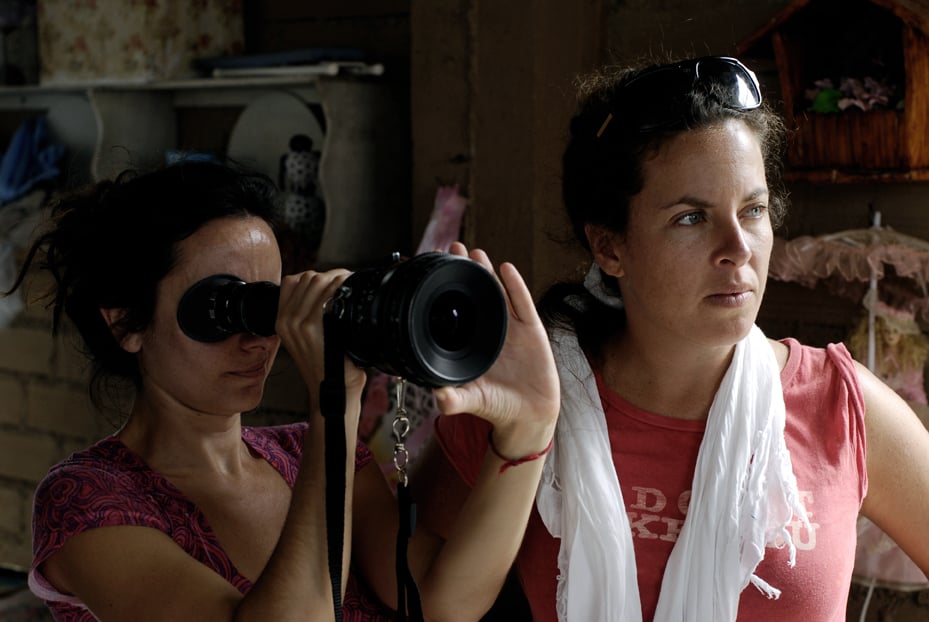
Doyle finds the heart and soul in faces. They aren’t characters, they aren’t actors, they’re people — people you should care about. That’s what’s so striking about your work on The Milk of Sorrow— the heartbreak in those faces, your empathy for them.
The interesting thing about that movie is that the star, Magaly Solier, had acted in Claudia’s previous movie [Madeinusa]. Claudia found Magaly in the middle of the mountains. She was not an actress. Claudia wrote The Milk of Sorrow based on what she learned about Magaly and the stories of the women around her. It’s almost a documentary in a way. It’s poetry, but it’s based on something that’s very real. That’s why it’s powerful.
[The character, Fausta], is carrying a universal feminine trauma. Whether you’ve experienced direct abuse or not, living as a woman in a patriarchal society, you are subjected to different levels of abuse and trauma. We’re all in those stairs — as [depicted] in the movie — or in any elevator or public transportation somehow having to protect our space and create different kinds of shields because the male energy has been so invasive.
I think what she was portraying is that trauma. It was so real. Then you invent the ceremonies and details around it — create a family and everything. But the essence of what happens to that character is in that woman’s face already.
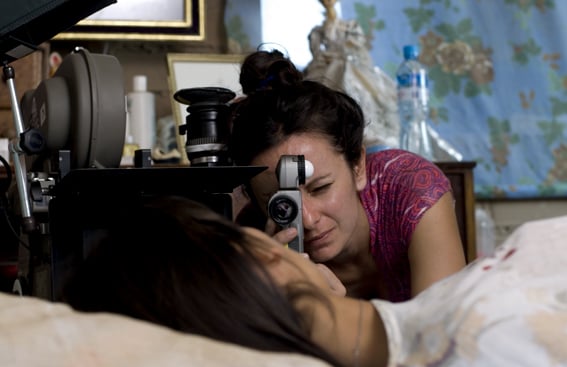
But you also found a way to capture it with your lens. You had some communication with Magaly that made her willing to cooperate with you.
In that movie, I think you could talk about female gaze. Because it’s a feminine story. It has a female director and cinematographer. But it’s not just because we’re female — it’s because our feminine energy is resonating with the story of this woman and a story of female sexuality, fear and healing. We had a rapport. We could vibrate with it and resonate with it and understand it.
That rapport happened, and that’s why we could portray it that way. There’s a shot, for example, when the gardener comes to the house and Fausta is alone, and she covers herself with her arms and covers her groin. [The action] was very clear for me and for Claudia — we could feel it in our own bodies and therefore could portray it in a very specific way. [If a man filmed that, he probably] would not have done the same. He might be thinking, “Why is she doing this?” Because men don’t experience that. Men are not raped by the presence of other men in the room as we are.
It doesn’t mean that a male filmmaker wouldn’t understand, because, for example, Sebastián Lelio has spent all of his career making films about women, and he’s very, very good at portraying women. I don’t feel he has a “male” gaze, I don’t feel he’s objectifying women. Also knowing him as a friend and a human, he really resonates with these issues. He has empathy. It’s not about your gender and which genitals you have. It’s about empathy.
It’s very interesting to notice how differently the audience reacts to The Milk of Sorrow today than when it came out almost 10 years ago. Even when we won tons of awards — including the Golden Bear at the Berlin International Film Festival and an Oscar nomination — it was mostly women who connected with the story back then. Today, men are connecting in a much deeper way, and for me this is fantastic to see. Everything that has been happening in the last year has really opened a conversation and allowed people to resonate and have empathy with things they didn’t see before. I was very happy to see that men are now seeing and feeling Fausta’s journey a lot deeper and more clearly than 10 years ago.
We'll be publishing additional material from “The Female Gaze” event in the near future.
Daniel Eagan has recently interviewed ASC members Anthony Dod Mantle, Rachael Morrison, Phedon Papamichael, Steven Poster and John Toll for American Cinematographer.
